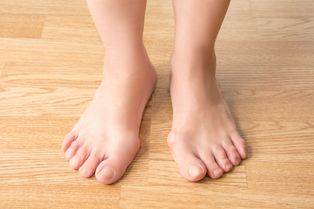
A bony bump which appears on the joint at the base of the big toe is known as the bunion. The bunion occurs when the big toe pushes against the toe that is next to it, this forces the joint of the big toe to get bigger and stick out. One of the most common sign that shows the presence of bunion is the color of the skin over the bunion which turns to red and sore. Bunion becomes aggravated when you put on poor fitting shoes. An inherited structural defect is also another thing which can cause the development of bunion. Other things that can cause the occurrence of bunion are stress on the foot or medical condition for example arthritis.
What are the Causes of Bunions?
Although the exact cause of bunion still remains unknown, it is generally believed that there are lots of factors which include abnormal foot function and mechanics, for example, overpronation, and abnormal anatomy at the beginning of the MTP joint and genetic factors. In individuals of lower ages, the major cause of bunion is overpronation. Abnormal biomechanics can cause instability of metatarsal joints and an imbalance of muscles, which causes deformation. The abnormal anatomy of the first MTP joint can make an individual be susceptible to the development of bunion deformity. One study revealed significant genetic inheritance of bunion deformity Caucasians of European origin.
It is believed that the bone structure that causes the development of bunion is inherited.
Other risk factors that increase the development of bunion are listed below:
• When you have a big toe that moves abnormally, this is referred to as hypermobility
• Foot injury
• Forms of arthritis, such as rheumatoid arthritis
• Conditions affecting the nerves and muscles for example polio
Prior to delivery, if the feet failed to develop properly, this has been found to be a risk factor that can lead to the development of bunion. When you put on high-heeled or poorly fitting shoes, it can also result in the growth of bunion. Based on studies, it was suggested that almost 2% of children that are below the age of 10 years suffer from this disease and almost half of all adults.
Symptoms of a Bunion
A bump which is formed at the base of the big toe is the major symptom of bunion. The bump can also appear at the base of the small toe which is referred to as “tailor’s bunion” or bunionette.
Other symptoms of bunion may include:
• pain and soreness
• numbness
• a burning sensation
• the affected joint will swell up
• hardened skin under the foot
• redness
• the presence of corns or calluses
• movement restriction within the affected toe
There are some things which can aggravate the symptoms of bunion and examples are putting on a narrow shoe or high-heeled shoe and standing for a long period of time among others. In the beginning, bunions appear as a small lump but they get worse as time goes on which results in pain and walking also becomes difficult. Contact your doctor if you experience the following:
• Stubborn foot pain
• Finding shoes that fit comfortably becomes a serious task
• Flexibility in the big toe is reduced
• When there is a large lump on or near the joint of the big toe
Bunion Treatment
Treatment for a Bunion requires restoring the circulation and blood flow to the affected structures in your foot. Pain is caused when swelling, inflammation and decreased circulation generate a blockage, which causes blood flow to be interrupted or slowed. Treatment for this issue requires breaking up the accumulated fluids in your foot to allow for improved healing and quicker recovery.
Products recommended for symptoms of swelling, redness, pain, and inflammation, and if coolness makes your pain feel better:
Ice Substitute Poultice
Bruise Relief Liniment
Muscle Therapy Massage Oil
Products recommended when swelling and inflammation are gone, but you still feel pain, stiffness, weakness, and/or sensitivity in cold and damp weather, and if heat makes your pain feel better:
Pain Relief Liniment
Tendon and Ligament Poultice
Muscle Therapy Massage Oil





